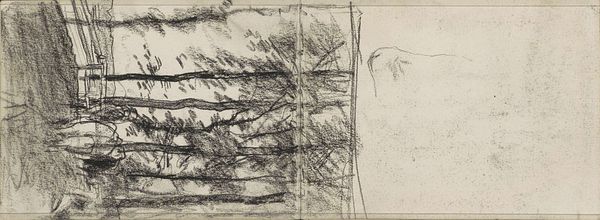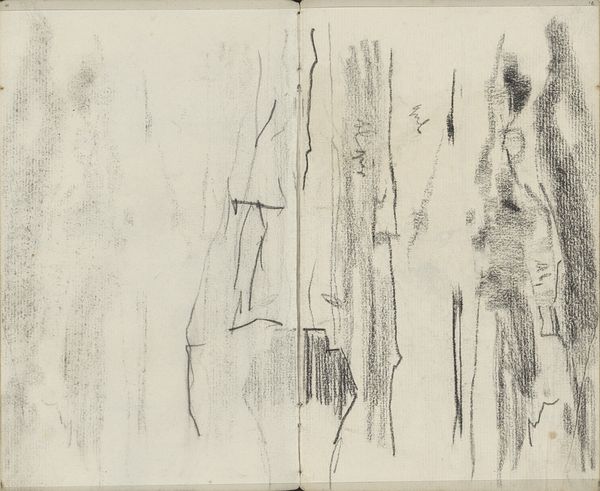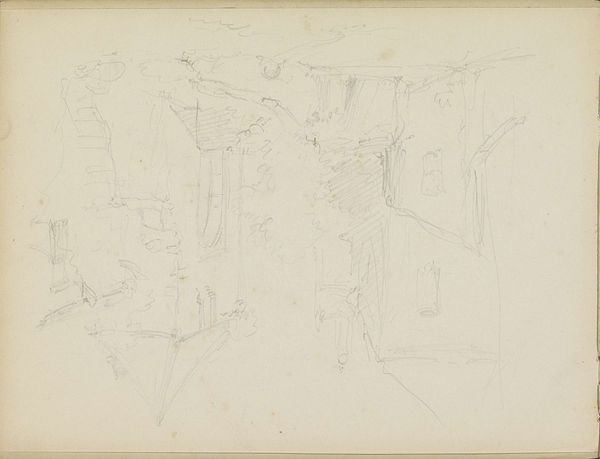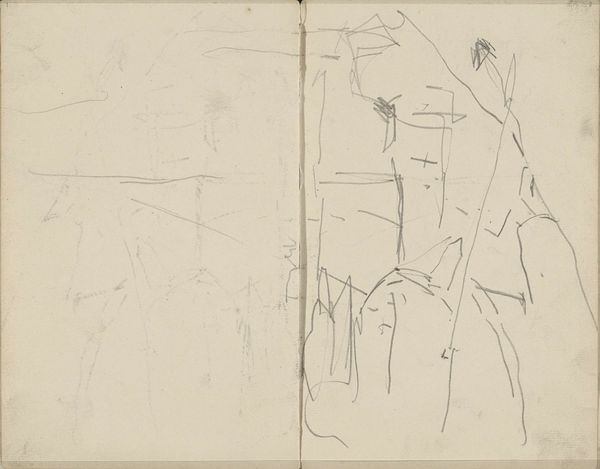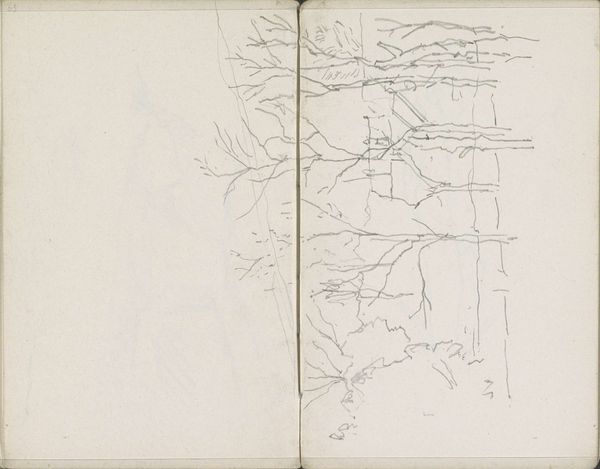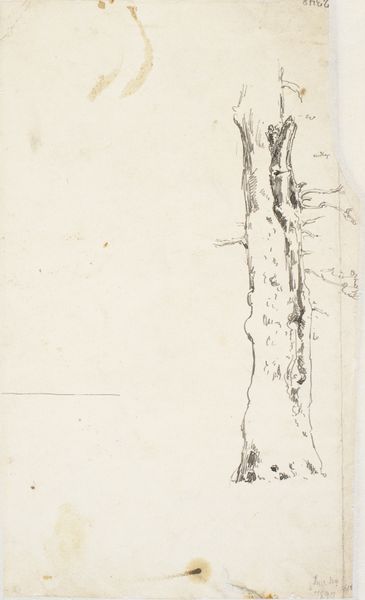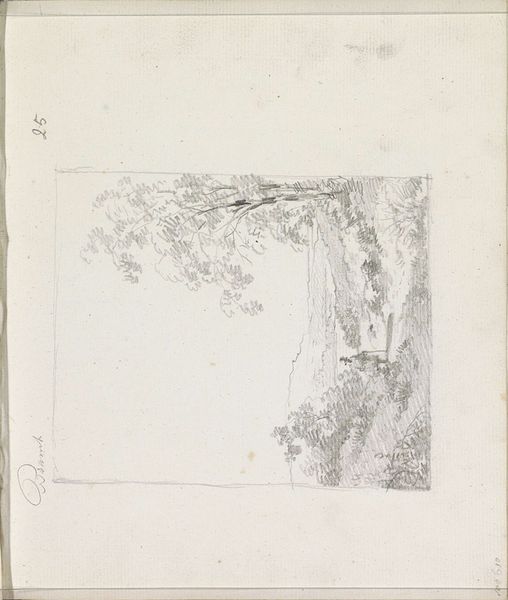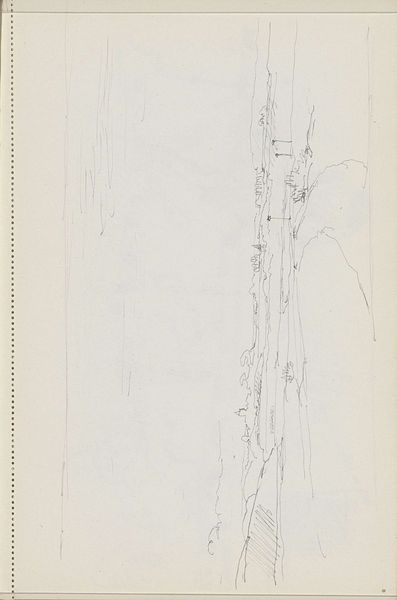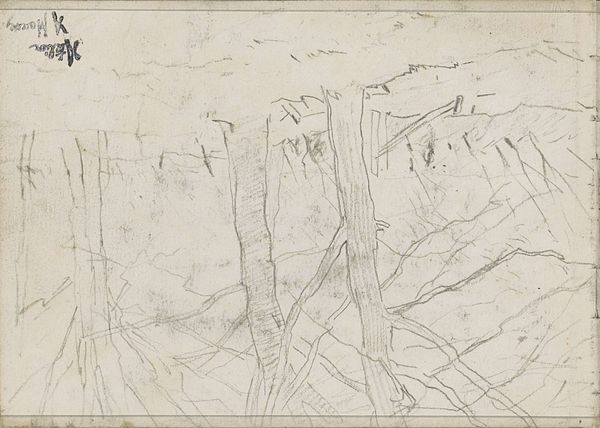
drawing, pencil
#
drawing
#
impressionism
#
landscape
#
pencil
#
naturalism
#
realism
Copyright: Rijks Museum: Open Domain
Editor: We’re looking at “Landscape with Trees and a Road” by Anton Mauve, created sometime between 1848 and 1888. It's a pencil drawing and it feels very preliminary, like a sketch in a notebook. What stands out to you about it? Curator: The drawing’s simplicity highlights the materiality of art production itself. Note the direct application of pencil on paper, the evident process. It moves away from illusions and imitations and instead emphasizes the labor involved in image creation, doesn’t it? What type of pencil do you imagine Mauve employed, and what social class would have access to it? Editor: I hadn’t thought of it like that, it feels so... natural. I guess I was focused on the 'naturalism' tag associated with it. You're bringing it back to the socio-economic implications. Does the choice of such readily available materials democratize the art form in some way? Curator: Exactly! It encourages us to consider how accessible materials can challenge traditional distinctions between high art and craft, allowing wider participation and diverse representations within the art world. Where and how would Mauve have sourced his drawing materials? What does that tell us about 19th-century Holland? Editor: That’s really interesting! I always think about the finished product, but the material reality... Makes you think about art differently, as work. Curator: Indeed. And the 'sketchiness', which might be overlooked, becomes critical. It’s a visual record of labour, of the artist *at work*. Editor: It shows a fleeting moment, but also a prolonged period of labor and accessibility! Thanks. Curator: My pleasure. The seemingly humble drawing speaks volumes when viewed through a materialist lens, doesn’t it?
Comments
No comments
Be the first to comment and join the conversation on the ultimate creative platform.
